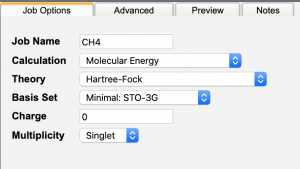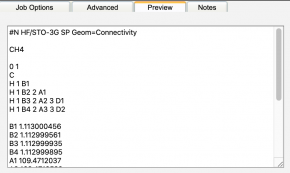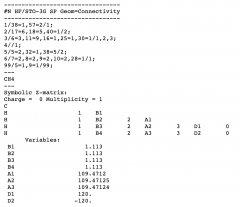Difference between revisions of "Comp Chem 02"
(→Review) |
(→Review) |
||
| Line 16: | Line 16: | ||
[[File:Screen Shot 2020-04-10 at 8.33.50 AM.png|240px]] | [[File:Screen Shot 2020-04-10 at 8.33.50 AM.png|240px]] | ||
|] | |] | ||
| + | |||
| + | ==Job Options== | ||
| + | As shown above, the jo | ||
| + | |||
| + | ===Calculation=== | ||
| + | |||
| + | ===Theory=== | ||
| + | |||
| + | ===Basis Set=== | ||
| + | |||
| + | ===Charge/Multiplicity=== | ||
Revision as of 13:45, 10 April 2020
(4/10/20, bes)
Previous pages:
In the previous discussion you were taught how to submit a WebMO/Gaussian job and analyze results related to measuring of bond length and angles, viewing molecular orbitals, and determining the rotation barrier energy about a carbon-carbon bond. We will continue to use WebMO/Gaussian to develop chemistry insights, but first we must discuss further the nature of the calculations that were done in the previous exercises.
Review
WebMo is an excellent tool (graphical interface) to build an input file for the Gaussian engine. WebMO assisted in the construction of the input file; you are familiar with the figure on the left where you select your job/calculation parameters. The middle figure is generated if you choose to "preview" the job parameters, and the figure to the right shows how Gaussian interpreted the WebMO input file. The figure on the right is an excerpt from the "Raw output" "Actions" item accessed through the "View Job" window.

|
]
Job OptionsAs shown above, the jo CalculationTheoryBasis SetCharge/Multiplicity |

